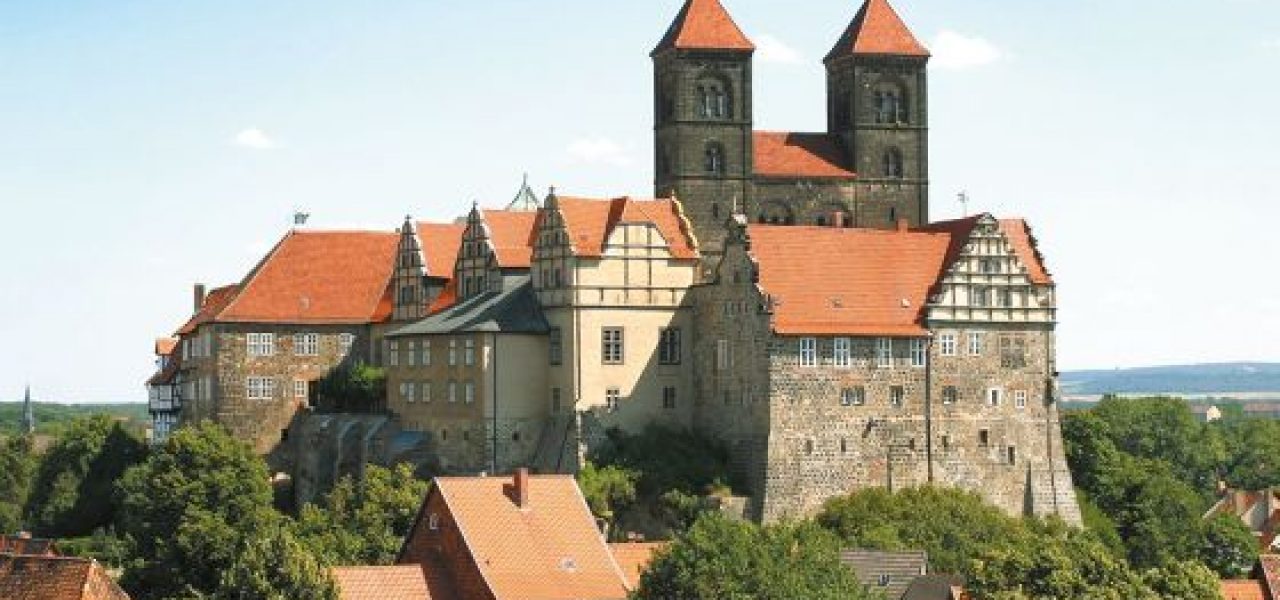INTRODUCTION
The Quedlinburg Collegiate Church St. Servatius is one of the most important Romanesque buildings. The flat-roofed basilica consecrated in 1129 already had three predecessors. It is the heart of the Unesco World Heritage city of Quedlinburg. Founded in the early 10th century by the first German King Henry I as Palatine chapel, the church became its burial place in 936.
HISTORY
After the death of King Henry I, who in 936 founded this Romanesque Heritage, at the instigation of his widow St. Mathilde, a nobility of ladies’ dignity arose at this point, which was intimately connected with the Ottonian and Salian ruling family and which maintained liturgical memory of the royal tombs.
King Henry I and his wife, St. Mathilde, laid the foundation for the development of the monastery, city and state. The tradition of the Ottonians to come to Quedlinburg also used later emperors. The world-famous treasure of the collegiate church is still convincing evidence of this rich history.
ARCHITECTURE AND FURNITURE
The monumental sandstone construction shows strong Lombard influences both on the façade and in the ornamentation of the interior. The gothic forms of the choir built around 1320 above the crypt are only visible from the outside. Inside, an apse wall constructed in 1938 attempts to restore the Overall Romanesque impression. The pair of towers were built in the course of the restoration work under Ferdinand of Quast in the 19th century. The east-extension of the crypt shows a Romanesque crucifix dating back to 1160/ 70, which shows triumphant Christ. Impressive capitals with abundant decorative elements add to the outstanding design of the cathedral.
Relief displays of the suffering of Christ and the twelve founding figures catch the eye of the onlooker, as their practical design is unique in European art of the 13th century. After being damaged by American artillery fire in 1945, the helmets received today’s flat tent roofs. The interior is divided by pillars and columns (Lower Saxony column change). They separate main and side aisles. In the west, the so-called imperial lodge limits the sacred space. In the east, a staircase leads to the High Choir and the Treasury, where the famous Cathedral Treasury can be seen. Under the choir is the crypt with the tombs of the first German royal couple.
OPENING HOURS
April – October
Monday closed
Tuesday – Saturday: 10.00 – 18.00
Sunday/religious holiday: 10.00 – 18.00
last entry: 17.30 (15.30 at special concerts on Saturdays)
November – March
Monday closed
Tuesday – Saturday: 10.00 – 16.00
Sunday/religious holiday: 10.00 – 16.00
last entry: 15.30
24.12., 25.12., 01.01. closed
CONTACT
Object
Domschatz Quedlinburg
Schlossberg 1g
06484 Quedlinburg
Telefon +49 (3946) 709900
Telefax +49 (3946) 524379
quedlinburg@die-domschaetze.de
ENTRANCE FEES & GUIDED TOURS
Church & Treasury 4,50 €
Church, Treasury & Crypt 6,00 €
Public guided tours on Saturday & Sundays at 11.00 and 13.00
Private guided tours on request
Guided tours for groups
Duration: 60 min
Group of more than 10: Church & Treasury 4,50 €
Group of more than 10: Church, Treasury & Crypt 6,00 €
Special conditions for school classes and projects are possible on request.
Note: Please note that due to various events (worship, weddings, concerts, etc.) short-term adjustments can vary to the opening hours on particular days.
TOURIST INFORMATION OFFICE
Information Office of Quedlinburg Tourism & Marketing GmbH
Markt 4
06484 Quedlinburg
Sachsen-Anhalt
Tel: +49(3946)905-624
Fax: +49(3946)905-629
www.quedlinburg.de


